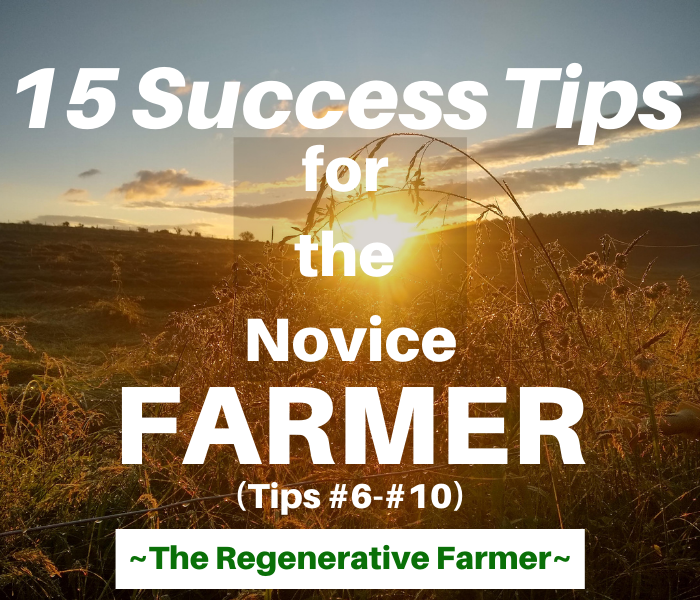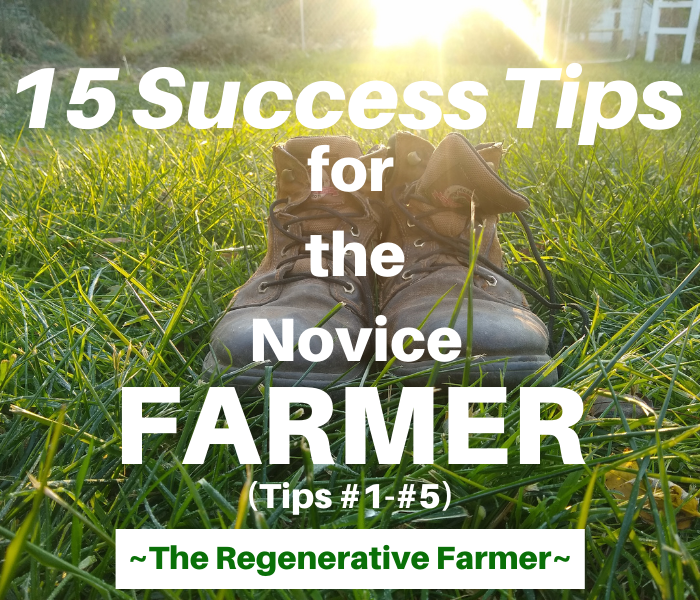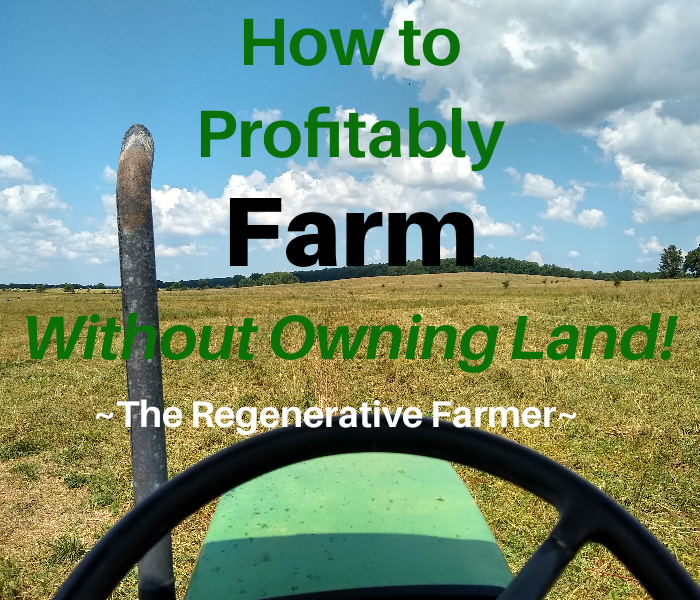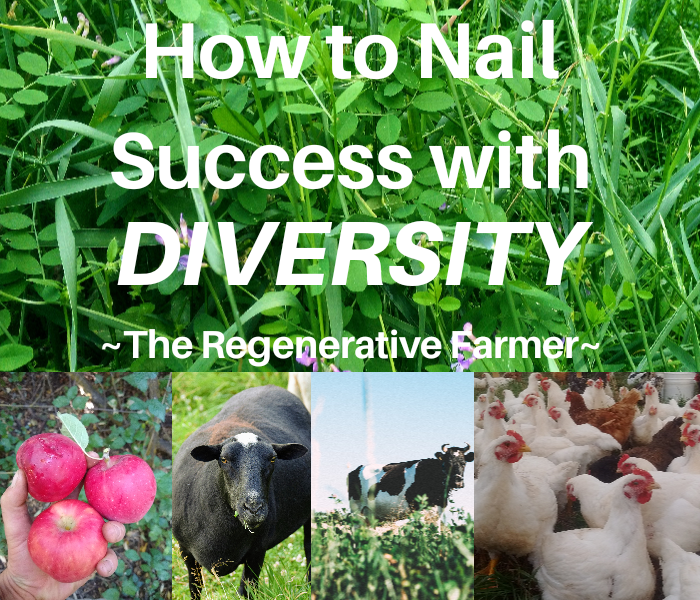This is article two of a three part series.
Good morning, Regenerators!
There is a sacred connection when working with the land; stewarding this beautiful creation tends to stir deep feelings of mixed emotions inside of me. Most often are satisfaction, contentment, awe, joy, marvel, respect, and even sadness at times.
Whether it’s moving cattle to a new paddock, watching a sunrise, witnessing the birth of a lamb, pruning fruit trees, walking through a field of vibrant grass dripping in the morning dew, slaughtering chickens to nourish my loved ones, or putting a bullet in an animal that won’t make it – these experiences all trigger a wave of different emotions in me.
The romance of the ‘emotional hurricane’ associated with farming is beautiful. I’ll admit, at times those emotions get too stressful – but the soul-nourishing contentment I find in the everyday activities makes it far worth it.
If it wasn’t, I wouldn’t be farming. 🙂
I want to help you enjoy those moments, too.
Farming is an honorable and sacred profession, but it comes with it’s difficulties. My goal is to give you information that will help you enjoy more ‘agricultural romance,’ and help you avoid some of those difficulties.
I want to see you thrive. We need more Regenerators in the world!
So, without further ado, let’s get after it!
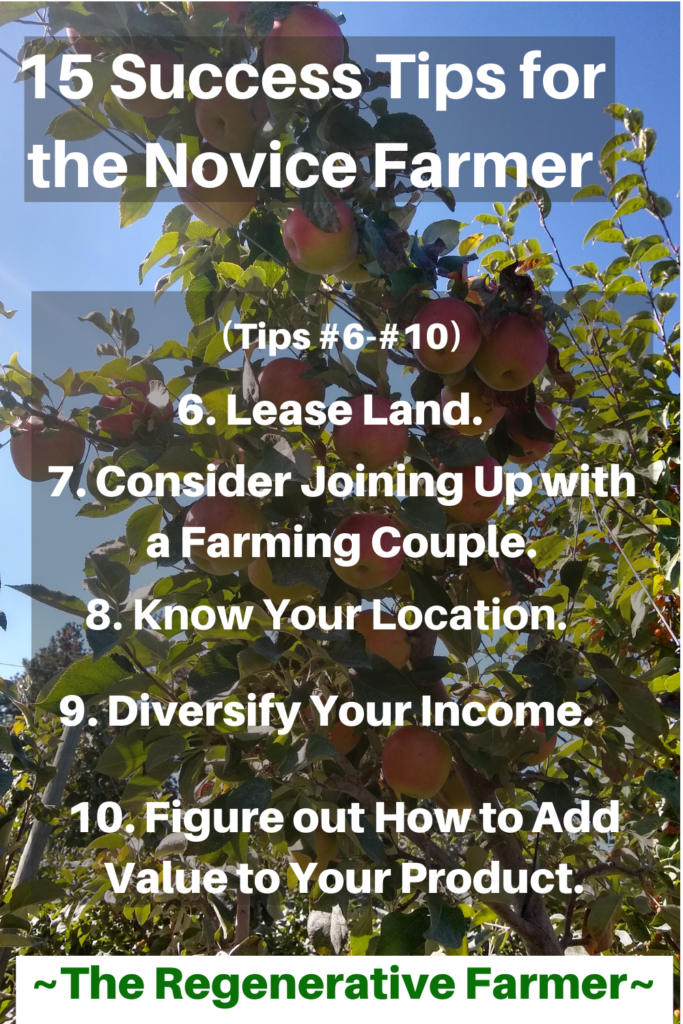
Review.
In part one, we covered these 5 tips:
- Get Experience Over Different Operations.
- Learn as Much as You Can.
- Know that You Don’t have to be “Big” to Make Money Farming.
- Start out Small and Manage Your Money Wisely.
- Invest into Building Your Marketing Skills.
(If you’d like to read the article, you can do so here.)
In this article, (part two) we’ll talk about these next 5 tips:
- Lease Land.
- Consider Joining Up with a Farming Couple.
- Know Your Location.
- Diversify Your Income.
- Figure out How to Add Value to Your Product.
6. Lease land.
I’ll give you the bare bones version of the pros and cons of leasing land for now. If you’d like to look into this topic further, you can look at the article I wrote: How to Profitably Farm Without Owning Land
One of the number one financial difficulties in agriculture today for new farmers/homesteaders is to purchase land.
This is understandable! Coming up with the capital to pay for the infrastructure and production essentials is already expensive enough. Independently purchasing a landbase in those early years makes it a whole level more difficult to survive.
Thankfully there are alternatives that could help you pinch some pennies, such as leasing land.
If you’re short on capital for buying land, yet are looking to expand your land base, or are just looking into farming, leasing land may just be for you. It can be a good way to start your operation without coming up with the capital to buy it.
What are some of the benefits of leasing land?
For starters, you don’t have to pay property taxes, and the rate of leasing land will generally be cheaper than monthly payments for purchasing it.
It’s completely viable, but not always easy.
It’s best to have an enterprise that is not permanent; this way, you can protect yourself if your landlord dies, turns fickle on the deal, or some other unfortunate cause. Focus on keeping your infrastructure mobile.
(For example, if you were custom grazing livestock, you don’t want to put up permanent fencing all over the property, or build barns and sheds for shade/shelter; instead put up a perimeter fence that could be mobile, and look into portable shelters.
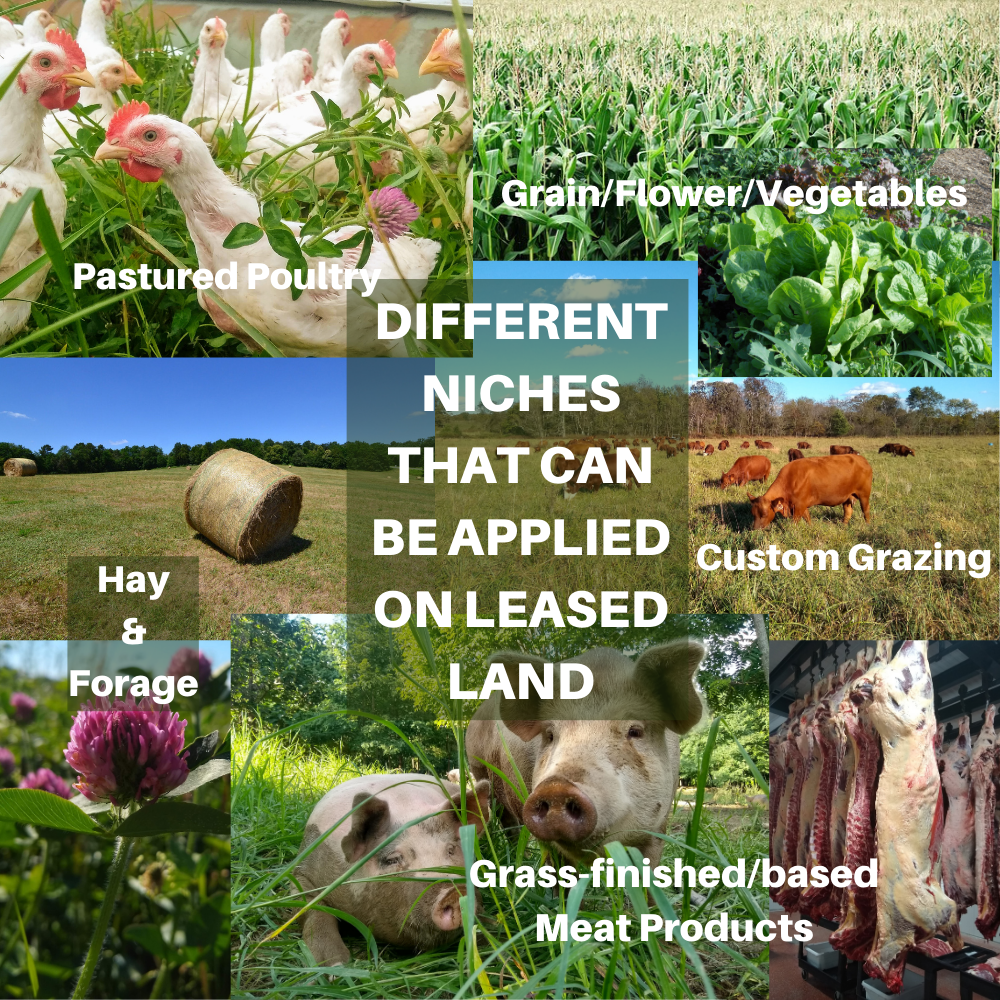
This way, you can ensure that if something goes wrong with the lease, you won’t lose your investment in the buildings, fence, etc.)
Some niches that can be applied to leased land are:
- grain/vegetable/flower production
- custom grazing
- pastured poultry
- grass-finished/based meat products and,
- hay/forage production.
Unless you have an extremely concrete relationship with your landlord , a niche based on perennial woody trees/shrub production (i.e. orchards, berry patches, food forests, etc.) would be risky.
You don’t need to buy land in order to farm!!
7. Consider Joining Up with a Farming Couple.
This is another potential option for those who want to get into farming but lack the capital to do so on their own.
If you’re going to look into this route, you’ll generally find opportunities at the beginning or end of a couples’ career in agriculture.
You could join up with an older couple who wants to eventually retire, or with a younger couple who’s just getting started and needs the extra hand.
I’d highly recommend a ‘checkout period’ if you’re serious about this route – a couple of weeks to a month to work with your partners, get an idea of the work, and sort out the important details.
This will give both you and your partners a chance to get familiar with each other, and see if the relationship would be compatible or not.
One of my mentors created a website called eagerfarmer.com for:
- Anyone looking for an intern or apprentice
- Anyone needing a farm manager
- *Anyone in need of part-time or full-time farm workers*
- Anyone who wants to intern at a farm
- *Anyone who has farming experience and would like to partner with someone who has land*
- Anyone who’s a landowner wanting someone to manage it for future generations
In this case, if you’re interested in joining up with somebody, feel free to check out the website, http://eagerfarmer.com/ !
8. Know Your Location.
It may or may not seem obvious, but where you are located is arguably one the main contributing factors as to whether or not you’ll make a living off of farming (via direct marketing).
Here’s what I mean: if you were based in a rural midwest town, or 30 miles outside of DC (or any BIG, foodie-type city for that matter), where do you think you’ll be more likely to make sales?
From the rednecks who buy Pepsi, potato chips and $4 pizzas from the gas station?
Or the yoga hippies who pay $20+ a pound for microgreens at a farmer’s co-op?
When it comes to selling high quality food that I can make a living off of growing, I’ll take a customer base made of the yoga hippies over the rednecks any day, please!!
The examples I gave above were both a little extreme, but the point is the same – people in a rural area either don’t care about good food or they try to grow it themselves; people in an urban area are far more likely to care about and purchase high quality food.
If you want to direct market, try to be based under 100 miles away from a large urban crowd.
If you want to custom slaughter beef, you’ll have a better chance with the rednecks. 😉
Or, if you want to be a grower for a farm co-op, it really doesn’t matter where you end up so long as you aren’t too far from the co-op routes.
It’s a simple concept, but tends to be very overlooked.
**YOUR LOCATION MATTERS.**
Depending on your goals and context, try to find a location that is ideal for you.
9. Diversify Your Income.
What do I mean by diversifying your income? One way I mean by that is through stacking enterprises.
For example, if you’re grazing cows, you can add sheep and pigs to graze with/behind them.
The sheep go after the forage that the cows tend to unlike.
The pigs could scavenge any leftovers behind the sheep and cows.
You could further diversify by moving poultry behind them to consume insects, pick at leftover grazing material, and spread manure.
Now take a look at the system: where it was just cows grazing, (and the commodity being milk/beef) we now have lamb/wool, beef/milk, pork, eggs, and poultry.
Diversifying with your income with different niches gives you better financial stability.
This way, if for some unfortunate reason your beef doesn’t sell, you still have a chance at generating income with the lamb, pork, eggs and poultry.
Diversifying your income doesn’t always have to apply to just farming.
If you’re a skilled butcher, horse trainer, woodworker, online business person, web developer, etc. – you can put those skills to work to diversify your income and help your farm get to a place of stability.
Diversity also acts as a type of insurance.
How does diversity act as a type of insurance?
If it’s a bad year and your main crop is either performing poorly or is not fetching a high price in the market, diversity could be your savior.
I know some family friends in Central Washington State who have been in the business of growing fruit for years.
One year, the frost killed the apple blossoms, and the apples were the chief source of income for their family.
The reason they were able to survive and stay in business? They had cherries on the side that made it through the spring.
(Speaking of diversifying, you may like the article I wrote on diversity here: How to Nail Success With Diversity ).
10. Figure out How to Add Value to Your Product.
Consumers are flooded with purchasing options every single day, and it can get confusing to figure out just WHAT they should buy.
If you want to stand a chance at making a profit through direct marketing, your product is going to have to:
a) solve the consumer’s problems, and
b) stand out from the rest of the crowd.
Target the niches – but try to do one better than that.
Aim to have your product turn into a niche of a niche. The more specific your product is, the more it will stand out from the crowd of average Joes.
Take dairy, for example. Instead of selling regular milk, what are some milk niches that you could target?
There’s regular pasteurized milk. This is pretty generic. I wouldn’t recommend direct marketing ‘regular’ milk.
Then there’s 100% grass-fed milk. (That’s better – it’s one example of a niche).
Then you’ve got 100% grass-fed raw milk. This is an example of a niche within a niche.
Did you see what just happened there?
You’ve added significant value to that product by producing it as raw and 100% grass-fed!
That’s a really good start.
But – do you recall how I said ‘try to do one better than that?’
Remember, the more specific your product is, the more it will stand out from the crowd of average Joes.
NOW, let’s say you market that milk as 100% grass-fed – raw milk – for healing eczema in kids. This is incredibly specific – and that’s a good thing!
When you add that value to your product, it becomes much more sale-able. It stands out from Joe Schmoe’s milk (sorry, Joe).
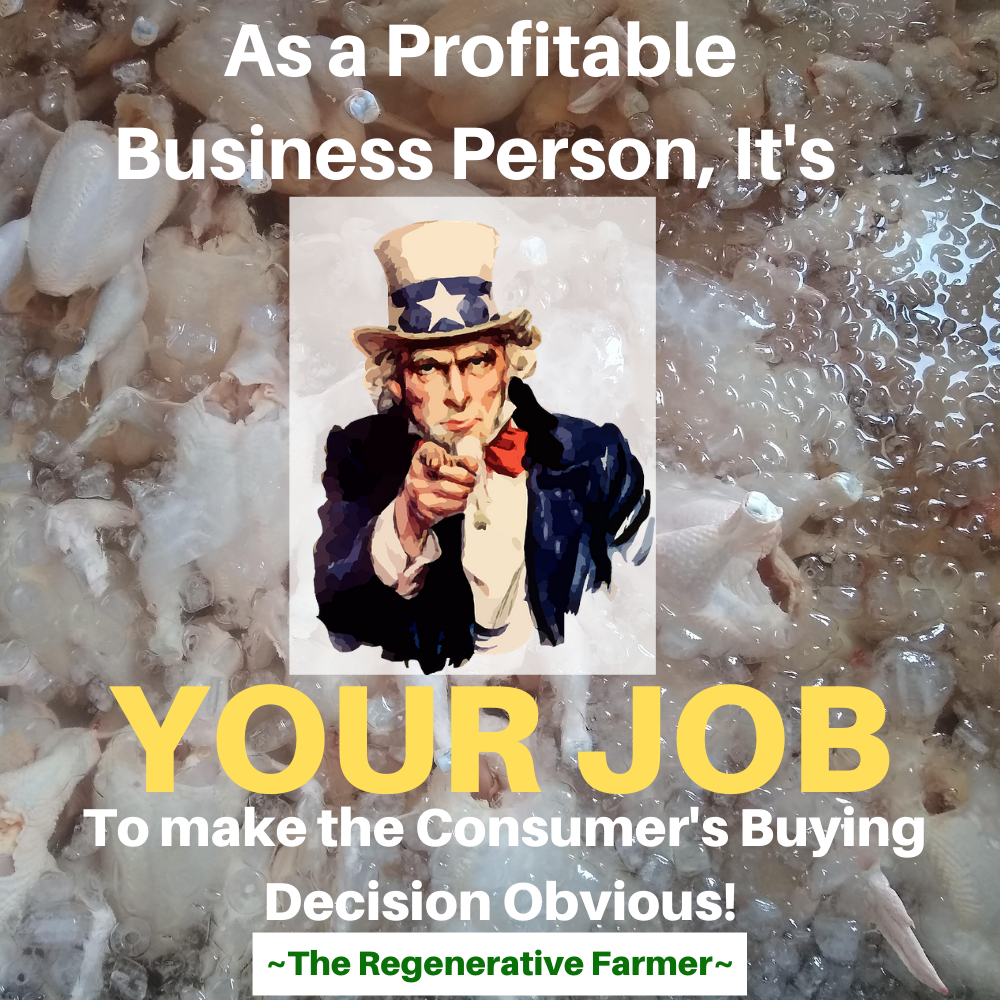
Let’s be honest here – your average yoga hippie isn’t going to buy Joe Schmoe’s milk.
Nope, she’s going to look for something that: a) solves her problems (like her toddler’s eczema), and b) makes her buying decision obvious.
Her life is complicated already. As an average consumer, she’s not going to go farm to farm to find the best option for her.
THAT’S YOUR JOB.
As a profitable business person, it’s YOUR job to make that buying decision obvious.
To do that, it starts by adding value to your product.
Conclusion.
This concludes tips #6-#10! Again, this is two of a three part series on 15 success tips for novice farmers (if you found this helpful, check out tips #1-#5, and watch for tips #11-#15!).
Let’s do a quick review of the tips covered today:
6. Lease Land.
7. Consider Joining Up with a Farming Couple.
8. Know Your Location.
9. Diversify Your Income.
10. Figure out How to Add Value to Your Product.
In part three of this series, we’ll cover the last 5 tips:
- MANAGE HOLISTICALLY.
- Pay Yourself.
- SHARPEN THE SAW.
- Think BIG.
- PLAN.
I hope this article has helped you on your journey in regenerative farming. Feel free to email me or leave a comment if you have any feedback! I enjoy hearing from you.
Remember, I want to see you thrive. We need more Regenerators in the world!
So get on out there, and keep regenerating.
YOU ARE THE REGENERATIVE FARMER!
Until next time,
~Isaiah

